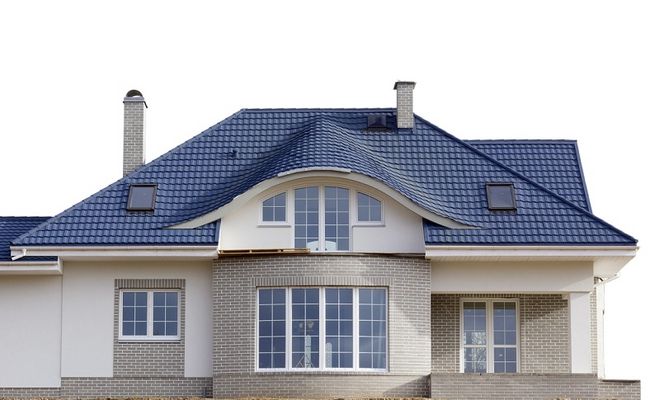 The roof protects the house - but it is more than just the end of the building. A conscious decision for a certain color and shape of the roof gives the house the finishing touch. No matter what construction project it is, A lot is possible “on top”. Which roof shape is ultimately chosen by the builder, depends on the building specifications, on budget and personal taste.
The roof protects the house - but it is more than just the end of the building. A conscious decision for a certain color and shape of the roof gives the house the finishing touch. No matter what construction project it is, A lot is possible “on top”. Which roof shape is ultimately chosen by the builder, depends on the building specifications, on budget and personal taste.
Basically, roofs are differentiated according to their slope. A flat roof is a roof with a slope of up to 10 °. Flat roofs are not very common in Germany for two reasons. First, they are a matter of taste - you either find them beautiful or ugly, there is little in between. Second, it was problematic until a few years ago, to build them waterproof, however, this has now been resolved and the technology in this regard is mature. Flat roofs are also ideal for greening.
At a slope of 10 until about 22 One speaks of a flat sloping roof. If the inclination goes beyond that, it is a pitched roof.
In Germany, the most common roof shape is the straight gable roof with or without roof overhangs. This roof shape is classic, timeless and relatively inexpensive. With different inclinations and eaves heights as well as dormers, the attic can be easily expanded and different architectural variants are possible. Saddle roofs are also often prescribed in development plans.
In addition to the gable roof, the hipped roof is also very popular. It protects the house optimally and exudes cosiness, because all four roof surfaces are inclined. However, this reduces the living space- or usable space in the attic.
A combination of saddle- and the hip roof is the crooked hip roof. In this form, only the gable tips are inclined. The half-hip roof protects the gable optimally from wind and weather, but is given the opportunity, to use a lot of space.
The simple monopitch roof is enjoying increasing popularity. The slope should be inclined towards the weather side, to protect the house from the weather. A monopitch roof is ideal, to install a solar system.
In this country, the choice of roofing material usually falls between clay and concrete. The before- and disadvantages are not apparent at first glance. Speaks for the clay roof tile, that the brick is a natural product, with better aging behavior. While bricks develop a patina, limescale efflorescence and moss formation occur on the concrete block. However, concrete roof tiles are cheaper than clay roof tiles. Both are available in many different colors and shapes today.